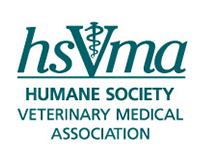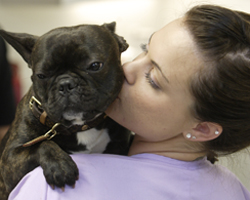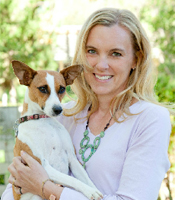|
Advocacy
|
A Veterinary Perspective on Captive Primate Welfare
Updates on Legal Personhood for Apes and the Captive Primate Safety Act
April 24, 2015
by Gwendy Reyes-Illg, DVM
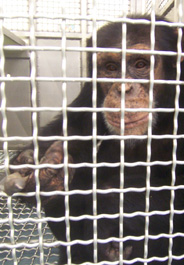 Do veterinarians have a role in advocating for captive primate welfare? The HSUSFifteen years ago, as a vet school-aspiring zoology major, I was so fascinated by what I was learning about primates that I decided to leave college for a bit to volunteer in an ape sanctuary. For six months, I spent nearly every day with young hominids: either with the juvenile chimpanzees and orangutans at the Center for Great Apes or the (human) children at the daycare center where I worked to support myself during this “sabbatical.”
This juxtaposition helped me develop a deep appreciation for the remarkable mental abilities of apes and the similarity between their emotional lives and ours. Today, as a veterinarian, I continue to work with and be amazed by our closest evolutionary relatives.
Primate Welfare Includes Mental and Psychological Health
Chimpanzees plan and carry out complex tasks and use tools they have made from natural materials. Tool use and ingestion of medicinal plants1 vary with what can only be called “culture.” They engage in “political” behavior: forming coalitions, expecting reciprocity from their allies, and – at times – manipulating others’ perceptions to their advantage2.
Great apes (chimpanzees, bonobos, gorillas, and orangutans) can learn to use something which looks very much like language; indeed, many argue that it is language. I have “spoken” with sanctuary apes who used signs like flower to request a fresh hibiscus bloom and hurt to point out a new wound on their body. Great apes recognize themselves in mirrors. And when they laugh, their unmistakable mirth is contagious.
For all primates, a group that includes apes, monkeys, and prosimians, the mother-infant bond is very strong. Most primates spend their infancy constantly being held by or holding on to their mothers. Childhood is measured in years for many monkey species and for all apes. During this prolonged period of dependency, mothers pass on knowledge and complex skills.
Most who work with apes and monkeys have little doubt as to their capacity to feel and recognize emotions. Science, while at times invoking the presumed theoretical impossibility of verifying primate emotions and what they might be like, has found ways to study emotions in primates; indeed, research in other areas, such as attention, takes for granted that primates feel emotions.
The highly-developed emotional and mental capabilities of apes and monkeys mean that, like humans, they can suffer and be harmed by more than just physical pain. Social deprivation and lack of stimulation frequently lead to stereotypic behaviors that resemble symptoms of mental illness in people. Though rocking and self-mutilation are often cited, I have known rescued primates to exhibit stereotypies including gingival-rubbing, cloth-eating, and continuous abnormal vocalizations.
Primate welfare is thus heavily influenced by mental and psychological health. Apes and monkeys require opportunities for self-determination, problem-solving, and social interaction. As awareness of primate minds increases, efforts to enhance legal protection for primates are gaining momentum, including on some novel fronts.
International Debate Concerning Legal Personhood of Apes Continues
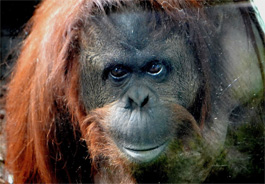 Sandra, an orangutan in an Argentine zoo, made headlines when she was recognzied as a non-human person. Claudio Bertonatti/Zoológico de Buenos AiresAt the end of 2014, Sandra, an orangutan in Argentina, made headlines around the world. It was reported that she had been recognized as a "non-human person unlawfully deprived of [her] freedom.” The ruling pertained to a suit filed by a group of animal lawyers asking that Sandra be removed from inadequate conditions at a zoo. After lower courts denied the group’s petition for habeas corpus (more on what this means below), a court of appeals whose role is to provide “a proper interpretation of the substantive law” ruled in Sandra’s favor.
Careful translation failed to confirm the “personhood” language, however the appellate court’s decision does clearly state that “non-human subjects (animals) are entitled to rights, and therefore their protection is required by the corresponding jurisprudence.” On returning to the lower court, Sandra’s case will be interpreted in light of the appellate court’s ruling.
This decision may signal a shift in Argentina’s understanding of Sandra’s legal status. “Property,” which Sandra and all other captive animals are legally designated as, is not the kind of entity that has legal rights – only persons and property owners do.
Similar judicial efforts are also underway in the United States. Several courtrooms in New York have been considering attorney Steven Wise’s argument that great apes should be granted the legal status of nonhuman persons. Specifically, the cases concern four chimpanzees, two of whom are legally owned by private individuals. Wise is petitioning for a common law writ of habeas corpus.
A writ of habeas corpus is a formal court order requiring that a “custodian” who is confining a prisoner appear before a judge or court so that it can be investigated whether that custodian has lawful authority to detain the prisoner. The legal mechanism of habeas corpus was used in the 1700s to get an enslaved African man recognized as a “legal person,” contributing to the undoing of the institution of slavery.
Though the chimpanzees’ living conditions sound dismal, this is not Wise’s focus; rather, he’s challenging what he refers to as the “unlawful detention” of the apes who, as pets and research subjects, are kept solely for their “owners’” benefit. Armed with a hundred pages of expert affidavits detailing chimpanzees’ mental and emotional lives, Wise maintains that their cognitive complexity endows the apes with the capacity for autonomy. Under our legal system, he argues, practical autonomy is essentially what rights protect. Chimpanzees, therefore, are entitled minimally to have their most fundamental interests protected, such as their rights to bodily liberty and bodily integrity3. Since only legal persons are eligible for any legal right, chimpanzees must first be recognized as legal persons.
UPDATE: Breaking News on
Legal Personhood for Apes |
Hercules and Leo, two chimpanzees held at a research laboratory at Stony Brook University in New York, were briefly granted a writ of habeas corpus on April 20 by State Supreme Court justice Barbara Jaffe. The move implied to many that the chimpanzees were being legally recognized as persons and sparked headlines around the world about their nascent legal rights.
The document sets a date for Stony Brook to appear in court and “show cause...why an Order should not be entered granting…the following relief: upon a determination that Hercules and Leo are being unlawfully detained, ordering their immediate release and transfer to Save the Chimps [sanctuary].”
The following afternoon, Justice Jaffe removed the words “writ of habeas corpus” from the order, but left the designation “order to show cause.” Her spokesperson, David Bookstaver, told a local newspaper that she hadn’t meant to weigh in on personhood, but is allowing the chimpanzees’ case to be argued.
Attorneys with the Nonhuman Rights Project, who brought the suit, point out that this is the first time that an order to show cause has been issued for a non-human animal. In their press release, they summarize their understanding of the order’s significance: it means “that the Court believes at minimum that the chimpanzees could possibly be legal persons for the purpose of Article 70 [Habeas Corpus], without deciding that they are, and that the issue will be determined only after it is fully briefed and argued at the adversarial hearing” at the New York State Attorney General's office on May 27.
Stony Brook University, in an emailed statement, said: "The University does not comment on the specifics of litigation, and awaits the court's full consideration on this matter."
Stay tuned! |
Philosophically, Wise’s assertion that chimpanzees can exercise autonomy may sound odd at first. Philosophers like Immanuel Kant have cited autonomy as what separates humans from other animals. Unlike animals, the argument goes, human actions are not just motivated by desires, like seeking pleasure or avoiding pain, or determined by instinct. Humans can act in accord with principles and act for reasons4.
Human autonomy may indeed be distinctive, given our capacity for more abstract thinking and complex discourse. Perhaps humans alone “act on principle,” at least if the “principle” in question must be articulated. However, the conception of animals as acting solely on instinct is now known to be flawed. Ethologists, psychologists, and veterinary behaviorists have discovered that, far from being automatons hard-wired to act as they do, many animals make deliberate decisions, risk pain and discomfort for “higher goals,” like protecting an ally, and pursue self-selected goals using diverse and novel means.
Chimpanzees’ advanced abilities, together with their “human-like” qualities, highlight their rationality, or ability to act for reasons. Watch a chimpanzee carefully select a particular stone, carry it to a distant palm nut tree, find an “anvil” to go with the “hammer” she has brought, and position a nut just right for cracking. Watch as a mother demonstrates the right grips, and then slows down and exaggerates the cracking process for her child to watch. Signing chimpanzee mothers are known to mold the hands of their infants to make the correct sign. Calling this “instinct” stretches the meaning of the term too far.
This is not to say that animals like chimpanzees don’t have any instincts. We humans have instincts, too, like running away from sudden danger. Rather, the contrast between instincts and autonomy make it easier to recognize the latter: in a wild group of chimpanzees, for example, we can find two individuals of the same sex and age, presumably endowed with very similar instincts. Yet their daily lives may vary greatly, with one individual doggedly seeking to become his group’s leader, while another is more interested in playing with youngsters or perfecting his tool use.
Since law is not my domain, I’ll leave it to legal scholars to assess Wise’s claim that legal rights are fundamentally intended to protect practical autonomy. But I have to agree that great apes have the capacity for autonomy. Their current legal status – that of property – not only fails to reflect their nature as intelligent, emotional, autonomous beings, but limits the protection of their welfare, especially when it conflicts with their “owners’”’ right to do what they wish with their “property.”
Captivity itself obviously limits apes’ exercise of autonomy: they are physically confined and rely on human caregivers for food, water, natural materials, and access to space and to conspecifics. However, U.S.-born chimpanzees cannot be safely released “back to the wild” – even African sanctuaries aiming to reintroduce wild-caught chimpanzees face an uphill battle.
The fact that Wise is requesting transfer to a sanctuary – where opportunities for autonomy could be maximized – rather than “freeing” the New York chimpanzees figured prominently in the judges’ decision not to grant the writ in the most recent case. Wise points out that, in this regard as in several others, his case resembles pleas for habeas corpus filed on behalf of children or mentally impaired individuals, rather than competent adults.
So far, Wise’s efforts in the court have been unsuccessful, but appeals are still in the works. Other measures around the world – like Spain’s resolution recognizing apes as bearers of basic rights -- together with the Argentine court’s decision regarding Sandra suggest we will see many more discussions on extending legal protections like personhood and rights beyond our species.
Legislative Remedies: The Captive Primate Safety Act»
«First 1 2 3 Last» |
|
Advocacy
|
A Veterinary Perspective on Captive Primate Welfare (Part 3)
The Misguided Exemption for Assistance Monkeys
 In the wild, capuchins are active and live in large social groups. In the wild, capuchins are active and live in large social groups. As "assistance monkeys," they can become psychologically damaged due to activity restrictions and isolation from other capuchins. Kathy Milani/HSISurprisingly, opposition to CPSA also comes from those who believe it does not go far enough. A few primate protection organizations oppose it because of an exemption, not present in the original bill but added in subsequent versions, for “a single primate of the genus Cebus...obtained from and trained by a charitable organization...to improve the quality of life of severely mobility-impaired individuals.” This exemption refers specifically to the organization Helping Hands Monkey Helpers, which trains capuchins to be "helper monkeys" for disabled people.
The American Medical Veterinary Association, which in 2008 provided eight pages of testimony in support of the Act, now holds a position of “non-support,” citing the exemption. The AVMA opposes the use of nonhuman primates as assistance animals because of animal welfare concerns and risks of injury and disease spread. In 2011, the Americans with Disabilities Act was revised to remove primates as federally recognized service animals. Paid human assistants and modern technological advances are obvious alternatives to “helper monkeys.”
Welfare concerns arise in several areas. Capuchins are adapted to live in large social groups that range over hundreds of acres. As “helper monkeys,” they are completely isolated from other capuchins and encouraged to bond primarily with the persons they serve. Their psychological welfare is also damaged by the disruption of the maternal bond to facilitate “socialization” with humans. Furthermore, the program requires the monkey remain in the home at all times, restricting activity and exercise.
Although Helping Hands did not respond to my inquiry about husbandry, housing, and training techniques, a New York Times article quoted a program administrator as stating that to prevent the “easily excitable” monkeys from biting, their teeth are extracted, a practice that violates AVMA standards of animal welfare. Finally, questions have been raised about Helping Hands’ training methods which, at least in the past, involved the use of punishment, including electric shock.
Given all of these problems, the exemption for assistance monkeys, however well-intentioned, seems misguided. However, the number of primates involved in the “pet” trade far exceeds the number of helper monkeys, so most animal advocates support passage of CPSA, carrying the hope that the exemption can later be removed.
Veterinary Role: Treating and Preventing Harm to Captive Primates
Whatever the future holds for the CPSA or legal personhood for apes, veterinarians will continue to witness and treat physical and psychological ailments of primates. Often, these health problems are the direct product of being kept as “pets” in private hands. As with all our veterinary patients, the factors that affect primates’ health, welfare, and quality of life – as well as our ability to provide veterinary care for them – are largely determined by who is caring for them and what the circumstances of their captivity are.
In the national debates about primate welfare and rights, perhaps we veterinarians will follow the example of pediatricians, the early leaders in the child protection movement, and work on a national level to prevent the harms we are called upon to treat. For me, protecting animal welfare and preventing animal suffering – the commitments emphasized in recent revisions to the veterinary oath – involves more than practicing good medicine; it means agitating for societal change on a larger scale.
From this perspective, the CPSA and legal personhood for apes fall under the rubric of “preventive medicine”: they have the potential both to decrease the number of animals in harmful and inadequate conditions and to improve the conditions of captivity. Though working with these remarkable animals is rewarding and inspiring, I envision a world where primate sanctuary veterinarians are not needed, where primate sanctuaries go out of business due to lack of demand, and the primates of the world instead live autonomously in protected forests.
«First 1 2 3 Last»
REFERENCES
- Peterson, Dale and Goodall, Jane, Visions of Caliban: On Chimpanzees and People, (New York, NY: Houghton Mifflin Company, 1993), 37.
- De Waal, Frans, Chimpanzee Politics: Power and Sex among Apes, (Baltimore, MD: Johns Hopkins UP, 1998).
- Wise, Steven, “Great shout,” in The Animal Ethics Reader, 2nd ed, Ed Susan J. Armstrong and Richard G. Botzler, (London; Routledge, 2008), 591-593.
- Hill, Thomas, “Autonomy and Benevolent Lies,” J Value Inquiry 18: 259.
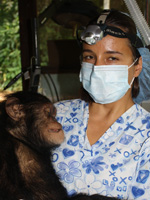 Dr. Gwendy Reyes-Illg received a Bachelor of Science degree in Zoology and a Doctorate in Veterinary Medicine from the University of Florida. Currently, she is pursuing a Master’s degree in philosophy at Colorado State University, focusing on the intersection of animal, environmental, and development ethics. As a relief veterinarian, Dr. Reyes-Illg provides emergency and wellness care to dogs, cats, and occasional wildlife in veterinary hospitals along the Front Range in Colorado. She also travels to primate sanctuaries in Africa and the U.S. to help chimpanzees and other animals rescued from the bushmeat trade, biomedical research, and the entertainment industry. Dr. Reyes-Illg enjoys working with people and animals from all walks of life.
Animal advocacy has long been Dr. Reyes-Illg’s passion. She contributed to many campaigns, including a voter-initiated ban on sow gestation crates in Florida. As a veterinary student, she developed the Willed Body Program to provide ethically-sourced cadavers for equine anatomy laboratory courses. She also launched Helping Alachua’s Animals Requiring Treatment and Surgery (HAARTS), a program that has saved the lives of over 1,000 pets in rescue organizations and low-income households while providing an alternative to terminal surgeries in the veterinary curriculum. In 2006, she was recognized by the Society for Veterinary Medical Ethics for her writing on ethical issues in veterinary education. |
|
|
Advocacy
|
A Veterinary Perspective on Captive Primate Welfare (Part 2)
Legislative Remedies: The Captive Primate Safety Act
Turning from the judiciary to the legislative front, Congress may also be debating primate protection soon, in the form of the Captive Primate Safety Act (CPSA). Introduced into Congress several times since 2005, the bill has yet to pass both houses in the same legislative session. Approved by a Senate committee last year, it will likely be reintroduced again soon.
CPSA would, through an amendment to the Lacey Act, make it illegal for a private individual to “import, export, transport, sell, receive, acquire, or purchase [primates] in interstate or foreign commerce.” While this legislation would not affect zoos, research facilities, or other federally licensed entities, it would decrease the number of primates sold as pets via the Internet, private dealers, and auctions.
Captive Primates are Inappropriate Companion Animals
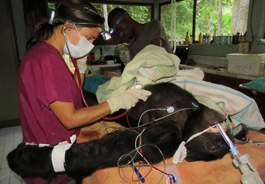 Dr. Reyes-Illg providing medical care to chimpanzees at the Sanaga-yong Chimpanzee Rescue Center in Cameroon. Dr. Gwendy Reyes-IllgCurrently, the trade in primates is largely unregulated, with an estimated 15,000 primates in private hands. Working with sanctuaries, I have met several of these individuals after their “owners” surrendered them.
At the Center for Great Apes, I met Linus, a 16-year old orangutan. When Linus arrived, he could have been a poster-child for why primates should not be pets. Purchased as an infant, he soon became too large and strong to be carried around. His “owners” simply put him in their basement, adding another tiny cage to the two that housed their other apes.
After living like this for over a decade, Linus’s muscles were so atrophied, he could not move without trembling. His hair was matted with pounds of feces. He was finally surrendered to the sanctuary only when he had begun disassembling his cage from the inside and an escape seemed imminent.
Jungle Friends, a monkey sanctuary, cares primarily for monkeys whose background is that of “child surrogate” and “pet.” Often, monkeys wind up in sanctuaries after they incur health problems, such as diabetes, caused by inappropriate diet and poor living conditions. Primates’ long lifespans, typically 30 to 55 years depending on the species, tend to be longer than those purchasing them can commit to them. The less fortunate are simply abandoned or euthanized.
Monkey dealers frequently boast their specialization in “human-socialized” monkeys. This virtually guarantees that the dealer removes newborns from their mothers at birth, denying them the essential period of constant contact so key to their psychological development. Ignoring the dual needs for maternal bonding and large areas in which to exercise, online monkey dealers assure potential buyers that infant monkeys can be conveniently kept in wire cages as long as they are provided routine feedings.
Public Health and Safety Concerns of Primate Pets
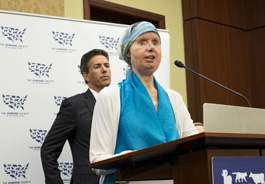 Charla Nash spoke to the media and members of Congress on Capitol Hill about the Captive Primate Safety Act in July 2014. Pete Marovich for The HSUSThe Senate committee that passed CPSA reported that its support was based not only on considerations of primate welfare, but also arose out of concerns for public health and safety. Because we are so closely related to primates evolutionarily, more infectious diseases can be transmitted to us from primates than from other species. Some may cause few symptoms in primates, but are serious or fatal in humans.
The risk of injury from a “pet” primate is also high. This was graphically illustrated by the severe mauling of Charla Nash. When she was attacked by Travis, her boss’s 200-pound chimpanzee, Nash’s hands and face were literally ripped off and she contracted an ocular infection which left her blind. Nash now advocates for CPSA, writing about “the lonely, unnatural life that Travis and other primates kept as pets are forced to endure.” She blames primates’ propensity to cause human injury on the deprivation and unnatural conditions they are forced to endure.
Primate Conservation Includes Halting the Trafficking Pipeline
CPSA may positively impact conservation efforts. The illegal international wildlife trade is estimated at $10 billion annually. Creative but tragic primate trafficking operations frequently make the news. While importing “pet” primates into the U.S. from abroad is already banned, the Act may protect wild primates in other countries by countering the increased international demand that is generated by news stories about American celebrities’ primate “pets.”
The main opponents of CPSA are groups representing industries that profit from animal use. Some have questioned the need for CPSA, arguing that the problem is not big enough to warrant federal legislation. They point out that roughly half of states already prohibit private possession of primates and question using federal resources to enforce a ban on interstate trade.
However, a quick Google search is enough to prove the need for this legislation. Topping the search results is a monkey dealer who boasts: “YES WE DO SHIP ANYWHERE IN THE UNITED STATES.” Their website directs visitors to a YouTube video proclaiming that monkeys “make excellent, excellent pets.” Given the vastly divergent state laws, federal restriction on interstate shipment is essential to combatting the primate pet trade.
Concerns about the cost of enforcement similarly lack substance. According to the Congressional Budget Office, “implementing the bill would have no significant effect on the federal budget,” as the Lacey Act is already enforced. Furthermore, the criminal and civil fines collected from violators would help fund CPSA’s enforcement.
The Misguided Exemption for Assistance Monkeys»
«First 1 2 3 Last» |
|
Advocacy
|
HSVMA Survey Reveals Strong Support for Mandatory Veterinary Reporting of Animal Cruelty
Majority of Respondents Have Seen Signs of Suspected Cruelty in Practice
April 22, 2015
Approximately 85 percent of the respondents to a recent HSVMA survey said they support requiring veterinarians to report suspected cases of animal cruelty. The survey, which was completed by more than 400 veterinary professionals nationwide, also found that nearly 80 percent of the respondents had been presented with at least one case of suspected animal cruelty during their career, and that more than a quarter of the respondents were presented with suspected cases of cruelty as many as 2-3 times per year.
“The results of this survey reveal how critical an issue this is for the veterinary profession,” said Dr. Susan Krebsbach, the HSVMA lead advisor on the project. “Veterinarians obviously want to do the right thing when they suspect animal cruelty is occurring, but they also are asking for the tools to help them report appropriately and without putting themselves or their practices at risk for doing so.”
Veterinarians are already legally required to report suspected cases of animal cruelty in 15 states, with Massachusetts becoming the most recent to enact such a law last year. Meanwhile, veterinarians are currently provided immunity for reporting in at least 27 states, according to data compiled by the Animal Legal Defense Fund (Veterinarian Reporting / Immunity Chart courtesy of Animal Legal Defense Fund).
There are numerous resources and training opportunities available for veterinary professionals in the area of animal abuse recognition and reporting (HSVMA maintains a list of available resources). However, respondents expressed a desire for more accessible CE training opportunities and nearly 85 percent felt that training on this subject should be offered during veterinary school.
HSVMA is looking at addressing this issue legislatively in states where reporting is currently not required or where immunity is not provided, in collaboration with state VMAs. Approximately two-thirds of the respondents said they believed their state VMA should have a role in advocating for legislation that requires veterinary mandatory reporting.
When asked what their biggest concerns were with regard to reporting, veterinary professionals reported that they were afraid they would face a lawsuit or license defense from reporting (51%); falsely accuse someone of a crime (51%); afraid of repercussions such as losing a client or being defamed on social media (44%); won’t recognize the signs of animal cruelty (23%); and don’t have enough training (19%).
“Individual veterinarians are looking to the professional organizations to take a leadership role in this area and provide the legal backing, related immunity, and education and resources they need to protect their patients who are at risk of abuse,” said Dr. Krebsbach. “We need to give them the tools to do so.”
The HSVMA survey was distributed online during February and March. There were a total of 436 respondents including 220 veterinarians. Other respondents included veterinary technicians, veterinary students and veterinary technician students. |
|
